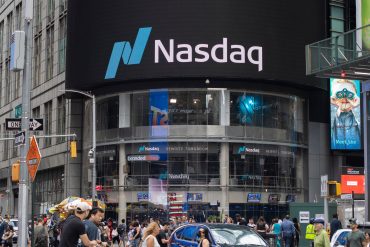

Tech stock investors push Nasdaq futures to record bullish positions, raising market correction concerns among analysts
Key Takeaways
- Nasdaq positioning hits 3-year high at $37.5 billion in net long notional, with Citigroup’s positioning model showing extreme readings of +4.6, signaling elevated profit-taking risks.
- S&P 500 futures reach highest net-long levels since July 2023 at $55 billion, mirroring conditions that preceded a 10% market decline over three months last year.
- Nasdaq 100 RSI climbs to 72 in overbought territory following a 9.6% surge in May, with tech concentration risk amplified by mega-cap dominance and regulatory scrutiny.
Introduction
U.S. equity markets face mounting risks as investor positioning reaches extreme levels not seen since 2023. Citigroup strategists warn that long positioning in Nasdaq 100 futures has surged to a three-year high, creating conditions ripe for significant profit-taking.
The tech-heavy index now commands $37.5 billion in net long notional exposure, while the S&P 500 registers $55 billion in similar positioning. These levels mirror the overextended conditions that preceded last year’s harsh 10% correction, raising concerns among market strategists about potential downside risks.
Key Developments
Citigroup’s positioning model places the Nasdaq at the top of its global equity rankings, with normalized scores of +4.6 for positioning and +4.0 for profit and loss. Chris Montagu, Citi’s global head of quantitative research, describes the market as “increasingly one-sided” following recent futures activity.
The surge in long positioning accelerated after the personal consumption expenditures report showed inflation aligning with expectations. This development triggered substantial new risk flows, with approximately $3 billion added to Nasdaq futures in a single week.
ETF positioning has soared for both major indexes, with the S&P 500 hitting the 86th percentile over its three-year average. The weekly activity in U.S. equities was notably concentrated, with strategists highlighting increased risk exposure across technology sectors.
Market Impact
The S&P 500 experienced its strongest weekly performance in a year, driven primarily by short covering as traders closed bearish positions. This activity indicates limited room for additional gains based on similar positioning dynamics.
Technical indicators signal overextension across major indexes. The Nasdaq’s 14-day RSI reached 72, placing it deep in overbought territory following a 9.6% surge in May alone. Leading technology names including NVIDIA and Palantir have driven much of this rally.
Treasury yields have emerged as a significant factor, with Monday’s sharp rise spoiling investor sentiment. This development recalls the August 2023 scenario when rising yields triggered the S&P 500’s 10% decline that lasted until late October.
Strategic Insights
The current positioning creates an asymmetrical risk profile favoring downside moves over continued gains. With 100% of short positions in both S&P 500 and Nasdaq-100 futures underwater, forced covering has contributed to upward momentum that may prove unsustainable.
Concentration risk presents a structural vulnerability, as a handful of mega-cap stocks dominate index performance. This dynamic amplifies potential losses if sentiment shifts suddenly, particularly given elevated earnings multiples across technology sectors.
The expiration of the U.S. tariff pause this week introduces additional uncertainty, while regulatory scrutiny intensifies around data privacy, antitrust, and cybersecurity issues. These factors create both cost pressures and potential positive impacts through increased user trust.
Expert Opinions and Data
“In short, profit taking has led to cleaner, less skewed positioning and with that a reduction in overall positioning risks,” Montagu wrote in a November 6 note. “Market gains on the back of further short covering appear less likely in the near term.”
The strategist emphasizes that overall S&P 500 positioning remains “moderately bearish” despite recent strength. This assessment contrasts with the extreme bullish positioning in technology-focused futures, where CNBC reports show the highest concentration of long bets in three years.
Regional positioning data reveals divergent trends, with European markets showing more balanced exposure. The FTSE 100’s bullish stance has waned for four consecutive weeks, while Asian indices including KOSPI and China A50 have seen rising positioning levels.
Conclusion
Current market conditions reflect a critical juncture where extreme positioning levels create elevated risks for near-term corrections. The combination of overbought technical conditions, concentrated sector exposure, and historical precedent suggests increased vulnerability to profit-taking activities.
Technology sector fundamentals remain strong, particularly in artificial intelligence and cloud computing, but valuation concerns and regulatory pressures add complexity to the outlook. The market’s ability to sustain current levels depends largely on whether upcoming economic data and policy decisions can support continued investor optimism without triggering the type of positioning unwind witnessed in 2023.





